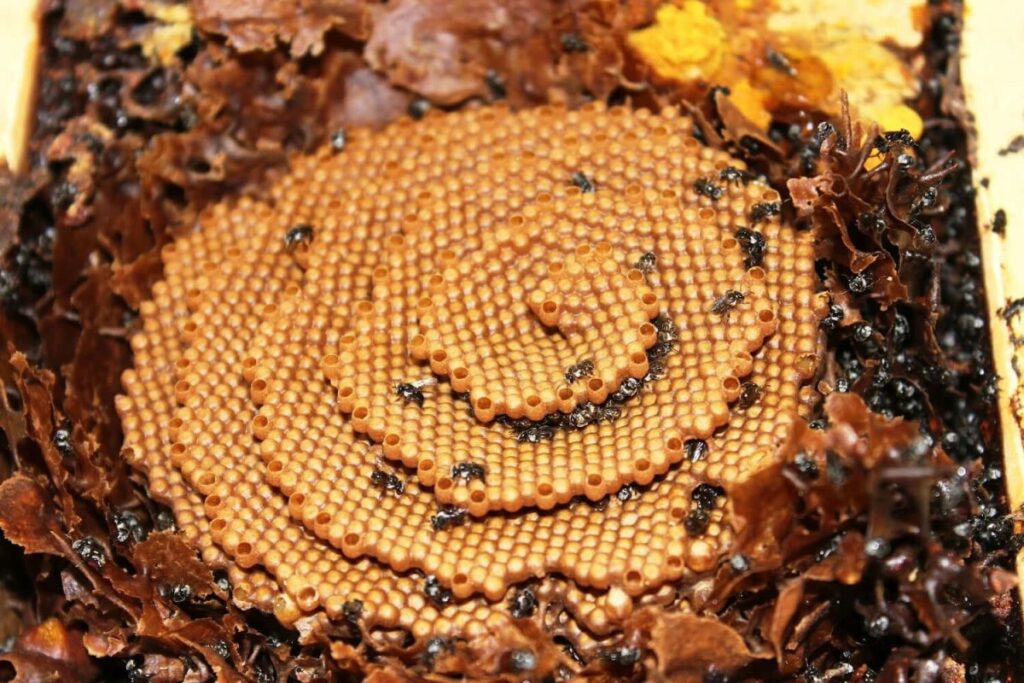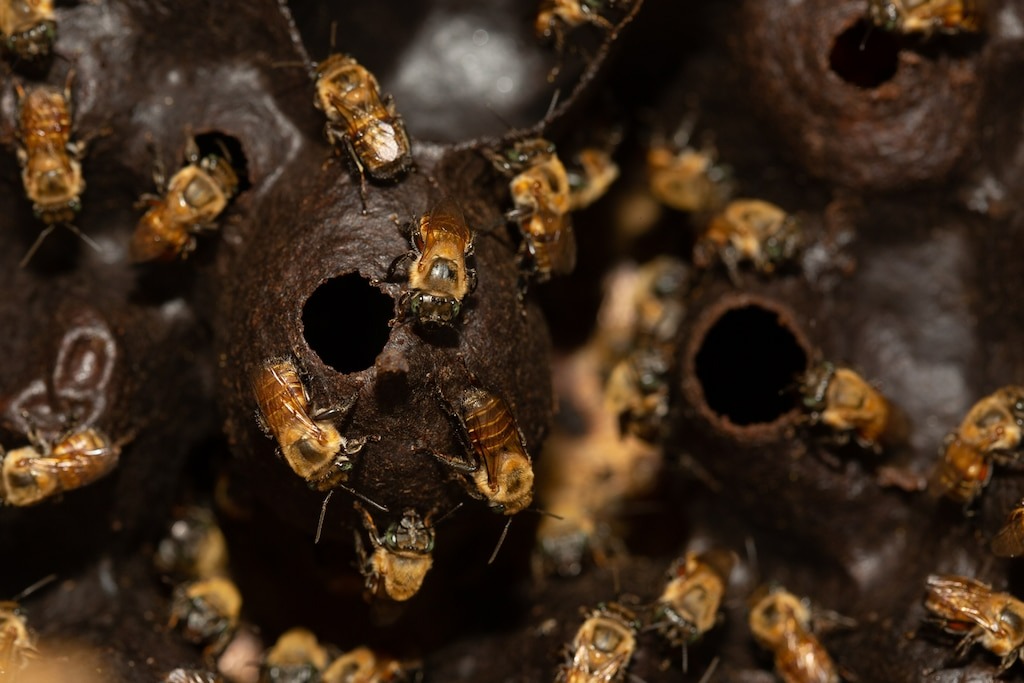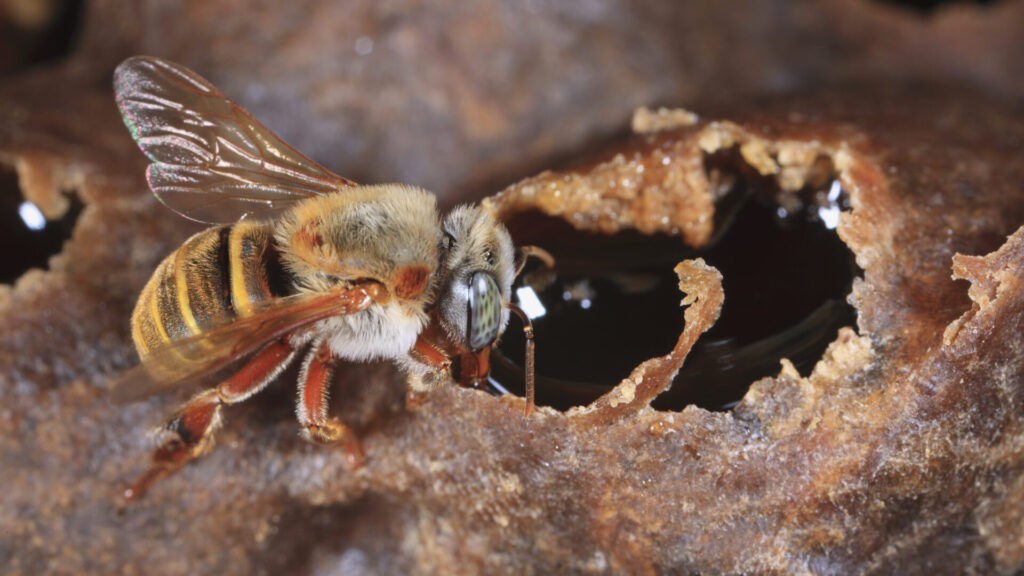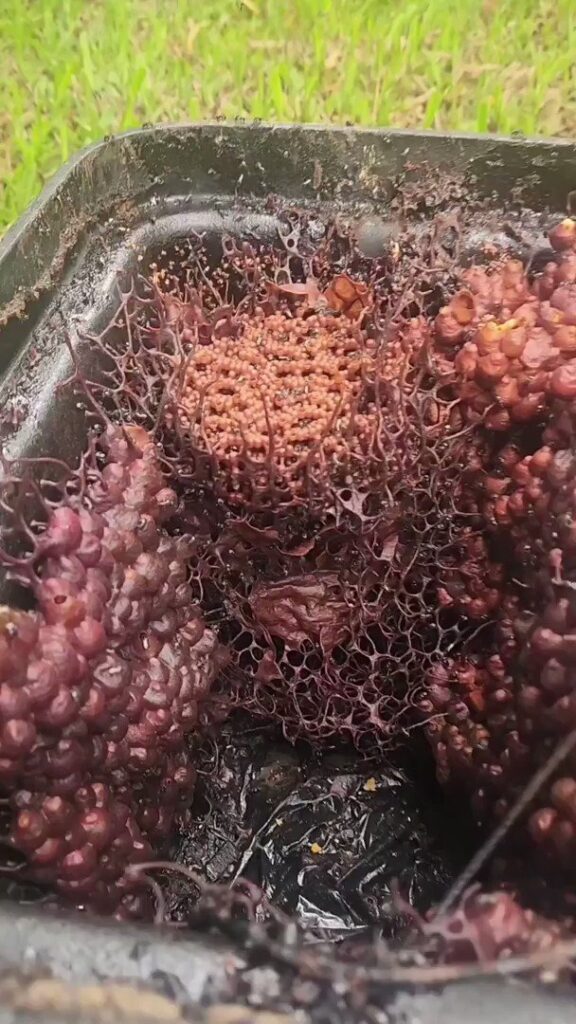
Amidst the vast and diverse ecosystems of Australia, a remarkable group of insects thrives – the native stingless bees. These gentle creatures, unlike their European counterparts, lack a stinger, making them a welcome addition to gardens and urban landscapes. While their honey production is modest compared to European honeybees, their contributions to pollination are invaluable.
Australian native bees are renowned for their architectural ingenuity, constructing irregular nests that are often hidden within hollow logs, tree cavities, or even underground burrows. These nests, crafted from a mixture of cerumen (a beeswax-like substance) and plant resins, provide a safe haven for the bees to raise their young and store their precious honey reserves.

Despite their diminutive size, native stingless bees play a pivotal role in Australia’s pollination ecology. They are particularly adept at pollinating native plants, many of which are crucial for the health and vitality of local ecosystems. Their foraging habits ensure the successful reproduction of a wide range of wildflowers, fruits, and vegetables, contributing to the overall biodiversity of the continent.

The honey produced by native stingless bees, often referred to as “sugarbag honey,” is a prized delicacy among honey enthusiasts. Its unique flavor profile, characterized by a tangy and slightly floral taste, is highly sought after by those seeking a taste of Australia’s natural bounty. While the honey yield from each hive is relatively small, the quality and distinct flavor make it a treasured treat.

In addition to their ecological and culinary significance, native stingless bees hold cultural importance for Australia’s Indigenous communities. For centuries, Aboriginal Australians have harvested sugarbag honey, utilizing its medicinal properties and incorporating it into traditional ceremonies. The bees themselves are revered as symbols of harmony and balance within the natural world.

As Australia’s landscapes face increasing threats from habitat loss, climate change, and invasive species, the conservation of native stingless bees has become a pressing concern. Protecting their nesting sites, promoting pollinator-friendly gardens, and minimizing the use of pesticides are crucial steps in ensuring the survival of these essential pollinators.

By recognizing and appreciating the unique contributions of Australian native stingless bees, we can foster a deeper understanding of their importance within our ecosystems. Their stingless nature, architectural prowess, and valuable pollination services make them irreplaceable members of Australia’s rich biodiversity.

Leave a Reply